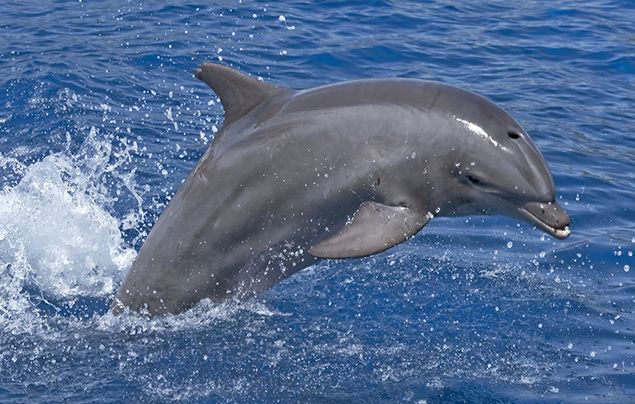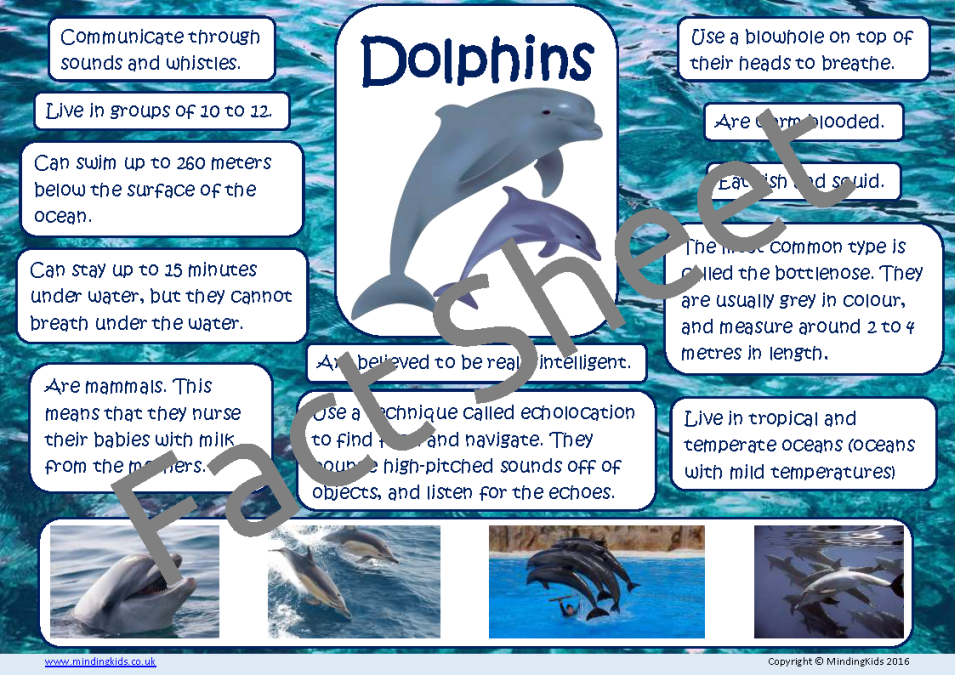Uncover Surprising Dolphin Facts That Highlight Their Playful Nature
Uncover Surprising Dolphin Facts That Highlight Their Playful Nature
Blog Article
Dive Into the Ocean: Exciting Dolphin Realities for Sea Lovers
The globe of dolphins provides a remarkable crossway of intelligence, social actions, and ecological significance. With around 37 varieties, these aquatic mammals show a variety of exceptional attributes that not just mesmerize sea fanatics yet additionally highlight their vital duty in marine ecological communities. From their intricate communication approaches to their outstanding analytic abilities, dolphins challenge our understanding of pet intelligence. The pushing need for conservation efforts to secure these animals and their environments increases important inquiries concerning our responsibility towards the sea's residents. What ramifications do these factors hold for our communications with these impressive beings?
Dolphin Types Diversity
Variety is a trademark of the dolphin household, encompassing a large range of species that exhibit distinctive physical attributes, actions, and habitats. The family Delphinidae, typically called nautical dolphins, comprises around 37 species, each adapted to certain eco-friendly specific niches. The bottlenose dolphin (Tursiops truncatus) is renowned for its intelligence and flexibility, prospering in both seaside and open ocean environments.
On the other hand, the orca (Orcinus orca), often referred to as the awesome whale, is the biggest participant of the dolphin household and is defined by its striking black-and-white coloration. Orcas demonstrate intricate social frameworks and searching strategies, showcasing the behavioral variety within the family members. Various other types, such as the rewriter dolphin (Stenella longirostris), are kept in mind for their acrobatic display screens and preference for warmer waters, highlighting the versatility of dolphins to numerous aquatic ecological communities.
In addition, river dolphins, including the pink river dolphin (Inia geoffrensis), live in freshwater environments, further showing the considerable environments that dolphins inhabit. Dolphin Facts. This unbelievable variety not only enhances aquatic ecological communities but also emphasizes the significance of conservation initiatives to secure these amazing creatures and their environments
Social Behavior and Interaction
The intricate social actions and communication techniques of dolphins are essential parts of their existence, promoting group cohesion and enhancing survival. These extremely smart aquatic animals display complex social frameworks, usually developing hulls that can range from a couple of people to over a hundred. Within these groups, dolphins involve in habits such as cooperative hunting, social play, and mutual security, which promote solid bonds among members.
Dolphins make use of an advanced variety of articulations, including clicks, whistles, and body movement, to share information and share emotions. Their trademark whistles work as one-of-a-kind identifiers, comparable to names, making it possible for individuals to call out to each other. This singing communication is enhanced by non-verbal signals, such as leaping, slapping the water, and integrated swimming, which additionally improves their interactions.

Distinct Feeding Routines
Distinct feeding practices characterize dolphins, showcasing their versatility and knowledge in numerous marine settings. These aquatic mammals are recognized for their varied diets, which largely are composed of fish, squid, and crustaceans. Their searching methods can vary significantly, usually customized to the certain prey and ecological conditions.
One notable approach is cooperative searching, where dolphins operate More Help in teams to herd colleges of fish into limited formations, making it easier for individuals to catch their meal. This social habits not only enhances their feeding efficiency but additionally reinforces social bonds within the sheath. In addition, dolphins have been observed site using a technique called "fish-whacking," where they use their tails to stun or disorient fish, assisting in simpler capture.
An additional remarkable feeding habit is echolocation, which enables dolphins to identify prey also in dirty waters. By emitting acoustic waves and analyzing the returning mirrors, they can recognize the size, shape, and area of their targets. This impressive ability highlights their versatility in numerous habitats, from shallow coastal locations to deeper oceanic waters. Overall, the unique feeding habits of dolphins highlight their role as knowledgeable predators within the marine environment, showing both knowledge and resourcefulness.
Intelligence and Issue Solving
Their knowledge is evident in their analytical skills, social interactions, and ability for understanding. Study has actually demonstrated that dolphins can utilize devices, such as making use of aquatic sponges to shield their rostrums while foraging on the seafloor.
In addition, dolphins display advanced communication abilities, utilizing a complex system of clicks, whistles, and body language. Dolphin Facts. This communication is essential for coordinating team activities, such as hunting and interacting socially, illustrating their capacity to work jointly in the direction of a typical goal. Their capacity to comprehend abstract principles, consisting of self-recognition in mirrors, additionally emphasizes their cognitive elegance
In controlled researches, dolphins have revealed a capability to address puzzles go to these guys and carry out jobs that need both memory and crucial thinking. These communications suggest not only knowledge however also a desire to engage with their setting in unique means. In general, the cognitive expertise of dolphins puts them amongst one of the most intelligent types on earth, promoting a much deeper appreciation for their duty in aquatic ecosystems.
Conservation and Environmental Influence
Conservation initiatives targeted at shielding marine ecosystems are critical for protecting dolphin populaces and their habitats. Dolphins are highly conscious environmental changes, and their survival is delicately connected to the health of oceanic ecological communities. Overfishing, pollution, and environment adjustment present considerable hazards to both dolphins and their environments.
Overfishing disrupts the food cycle, bring about a decrease in victim varieties essential for dolphin survival. Toxins such as chemicals and plastics gather in aquatic settings, jeopardizing dolphins via intake and bioaccumulation. Raised water temperature levels and sea acidification, effects of environment modification, further jeopardize the delicate equilibrium of marine communities, impacting dolphin reproduction and migratory patterns.
Conservation initiatives, consisting of the facility of marine secured areas (MPAs), play a crucial function in securing these smart creatures. MPAs aid minimize human effect, enabling communities to grow and recoup. Public recognition campaigns and community involvement are additionally necessary, promoting a society of stewardship in the direction of marine life. By prioritizing conservation efforts, we can ensure that future generations appreciate the charm and vitality of dolphins and the oceans they live in. Shielding aquatic environments is not nearly conserving dolphins; it has to do with protecting the intricate internet of life that maintains all of us.
Verdict
Dolphins exemplify the intricacy and splendor of aquatic life via their diverse species, detailed social frameworks, and progressed cognitive capabilities. As essential components of marine communities, dolphins highlight the requirement of continuous preservation initiatives to safeguard their habitats.
Various other species, such as the spinner dolphin (Stenella longirostris), are kept in mind for their acrobatic displays and preference for warmer waters, highlighting the adaptability of dolphins to different marine environments.
On the whole, the one-of-a-kind feeding routines of dolphins highlight their duty as experienced predators within the marine ecosystem, demonstrating both knowledge and ingenuity.
On the whole, the cognitive prowess of dolphins places them among the most intelligent varieties on the earth, cultivating a deeper gratitude for their duty in aquatic communities.

Report this page